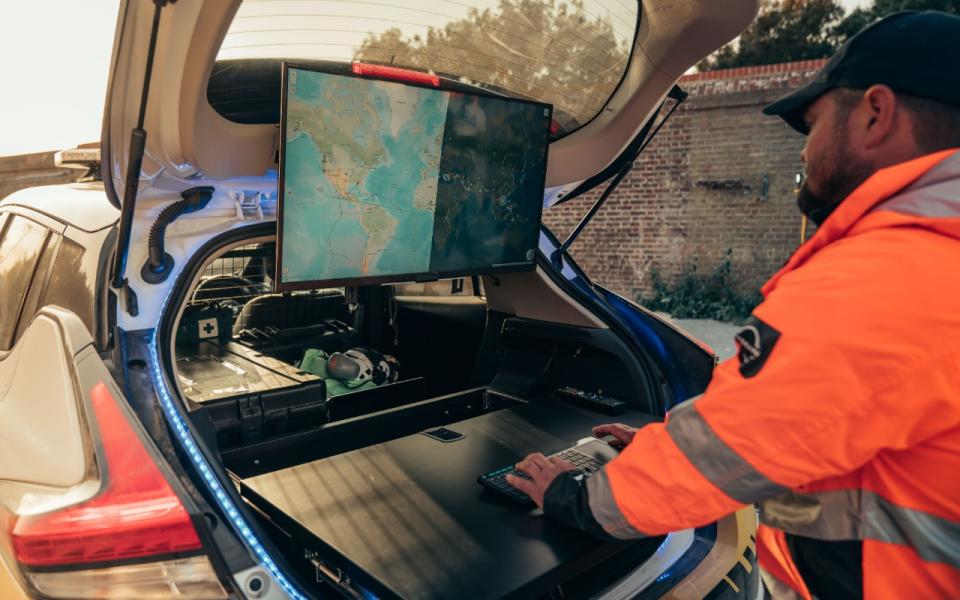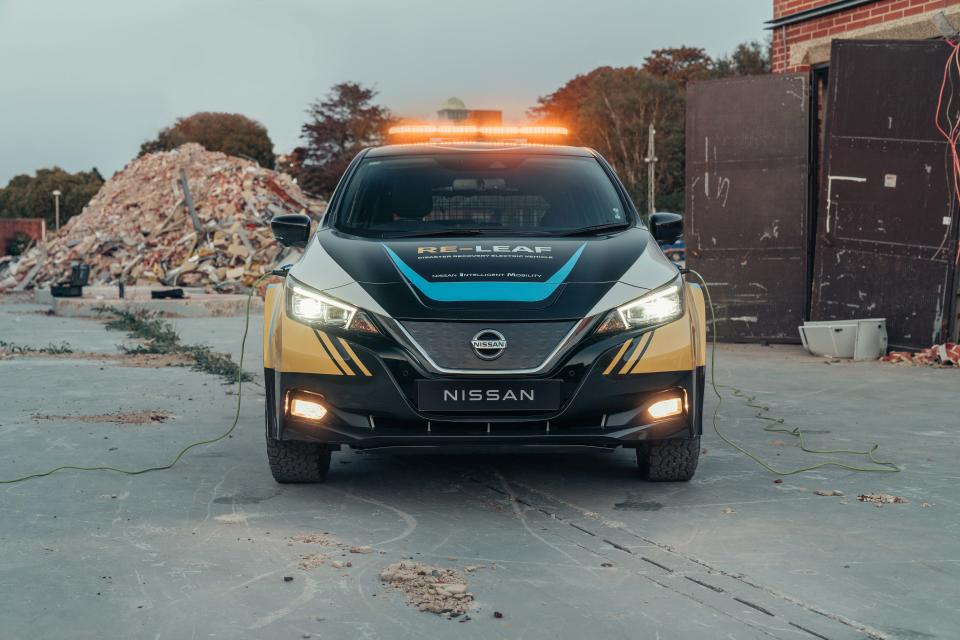Nissan's Re-Leaf prototype is a mobile power supply for disaster response
Nissan has been using its EVs for emergency power in Japan since 2011.
When a natural disaster strikes, one of the biggest challenges is getting power to the disaster site. Nissan may have a way to change that. The company has developed an all-electric emergency response vehicle concept. Dubbed the Re-Leaf, the prototype is based on the Nissan Leaf passenger car. In the event of an emergency, it’s able to provide a fully mobile power supply.
The Re-Leaf is fit with weatherproof plug sockets mounted on its exterior. Those can power 110- to 230-volt devices using the car’s lithium-ion battery. The EV could, for instance, power an electric jack hammer, ICU ventilator or LED flood light. Or, with a fully charged battery, the Re-Leaf could power the average UK household for roughly six days.
The Re-Leaf is modified so that it can navigate roads covered in debris. It has a raised ride height, underfloor protection and wider tracks. There’s also a pull-out desk and monitor in the trunk and extra cargo space in the backseat.

This is still a working concept, but Nissan has been using the Leaf to provide emergency power and transport in Japan since 2011. So there’s reason to believe that the Re-Leaf could be put to use soon, too.
“We’re constantly exploring ways that electric vehicles can enrich our lives, beyond just zero-emission transportation,” said Helen Perry, a Nissan executive. “Concepts like the Re-Leaf show the possible application of EVs in disaster management and demonstrate that smarter, cleaner technology can help save lives and provide great resilience for the future.”



